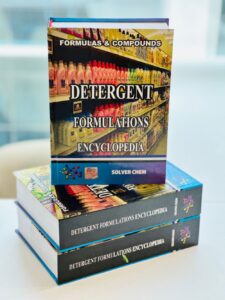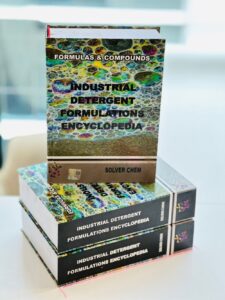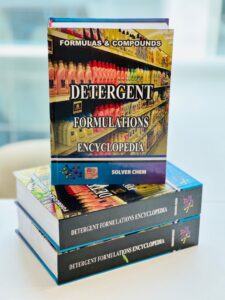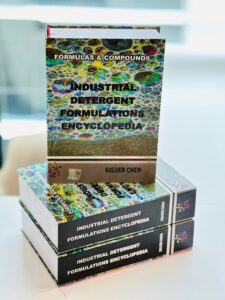
 🧴 Powder Detergent Manufacturing – Formulations and Production Methods
🧴 Powder Detergent Manufacturing – Formulations and Production Methods
Overview:
Powder detergent manufacturing is one of the most essential and technically advanced processes in the detergent industry.
It involves the combination of chemical formulation, process engineering, and drying technology to produce efficient, stable, and user-friendly cleaning powders.
Powder detergents are widely used in household and industrial applications because of their cost-effectiveness, long shelf life, and high washing efficiency under various water and temperature conditions.
Modern formulations are designed to achieve balanced cleaning performance, fabric safety, and environmental compliance, utilizing phosphate-free builders, biodegradable surfactants, and high-efficiency enzymes.
This section explains the main production routes, formulation principles, and key process technologies — from non-atomized batch production to advanced spray-dried and towerless systems — offering a complete understanding of powder detergent manufacturing science.
1. Non-Atomized Powder Detergent Manufacturing (Without Spray Drying)
Non-atomized production involves dry blending or mechanical agglomeration without the use of a spray-drying tower.
It is ideal for small and medium-scale plants, where operational simplicity and cost efficiency are key.
Raw materials such as surfactants, builders, and fillers are mixed, neutralized, densified, and sieved to obtain a homogeneous, free-flowing powder.
This process allows flexibility in formulation adjustments, such as foam level, active matter content, and density, depending on market requirements.
Optional additives like enzymes, optical brighteners, perfumes, and anti-caking agents are incorporated at controlled temperatures to preserve activity and texture.
2. Tower (Spray-Dried) Powder Detergent Manufacturing
Spray-drying is the most common industrial technique used for large-scale, high-quality powder detergent production.
A liquid slurry containing surfactants, builders, silicates, and water is prepared in a mixing tank and pumped into a spray tower, where it is atomized into fine droplets and dried with hot air (250–400°C).
The resulting granules are porous, uniform, and rapidly soluble, providing excellent performance and appearance.
This method enables precise control over particle size, bulk density, and moisture content, resulting in a high-end product suitable for both household and industrial markets.
3. Atomized Powder Detergent Manufacturing (Spray-Dried with Post-Addition)
Atomized systems combine spray drying with a post-addition process, where heat-sensitive ingredients such as enzymes, fragrances, colorants, and optical brighteners are added after drying.
This ensures the stability of sensitive materials while maintaining the overall performance of the detergent.
The atomized production method allows the creation of specialized detergent types — including multi-enzyme, color-safe, or oxygen-based bleaching powders — each tailored for specific washing conditions and fabric care levels.
4. Automatic Washing Machine Powder Detergent Manufacturing (Low-Foam Types)
Automatic washing machine detergents are formulated for controlled foaming, high dispersion, and balanced cleaning at various temperatures.
These powders use a mix of anionic and nonionic surfactants, zeolite-based builders, anti-foam agents, and oxygen-based bleaches.
They are optimized for front-load and top-load washing machines, providing efficient soil removal, brightening, and anti-redeposition effects.
Such formulations emphasize low-foam behavior and enhanced rinsing, ensuring smooth mechanical operation and residue-free washing results.
5. Towerless (Non-Tower) Powder Detergent Manufacturing
Towerless production represents a modern, energy-efficient alternative to traditional spray drying.
Instead of a drying tower, mechanical granulation, fluid-bed drying, or compacting systems are used to achieve the desired powder characteristics.
This approach significantly reduces energy consumption, installation cost, and environmental impact while maintaining comparable performance.
Towerless systems provide excellent control over particle size distribution, active matter concentration, and powder density, making them ideal for eco-friendly, flexible detergent production at small and medium scales.
6. Towerless Automatic Washing Machine Powder Detergent Manufacturing
This hybrid process integrates the performance benefits of automatic washing machine detergents with the efficiency of towerless granulation technology.
It produces high-quality, low-foam powders that dissolve quickly and perform effectively even in low-water or energy-saving wash cycles.
These detergents feature optimized builder-to-surfactant ratios, high enzymatic stability, and excellent anti-redeposition characteristics, ensuring both fabric care and machine protection.
General Properties of Powder Detergents:
-
Bulk Density: 450–800 g/L depending on formulation and process.
-
Moisture Content: Typically 4–10%.
-
pH (1% Solution): 9–11 for optimal soil removal and fabric safety.
-
Foam Level: Adjustable for hand wash or automatic applications.
-
Appearance: Uniform, free-flowing, non-caking granules.
-
Key Functional Additives:
- Builders (STPP, zeolite, sodium carbonate)
- Surfactants (LAS, AES, nonionics)
- Anti-redeposition agents (CMC)
- Enzymes and brighteners
- Bleaches (percarbonate, TAED)
- Anti-caking and flow aids (silica, sodium sulfate)
Summary:
Powder detergent manufacturing represents the core of detergent technology — blending chemical engineering, process optimization, and sustainability.
From simple dry-mix methods to advanced spray-dried and towerless systems, each route offers unique advantages in terms of performance, cost, and ecological footprint.
Modern detergent innovation focuses on biodegradable surfactants, phosphate-free builders, and energy-efficient drying techniques, creating formulations that deliver superior cleaning performance with reduced environmental impact.
This section forms the foundation for developing next-generation detergent powders that meet global standards for quality, safety, and sustainability.


